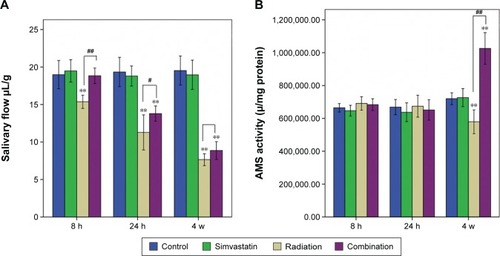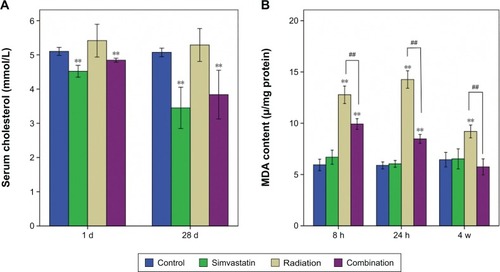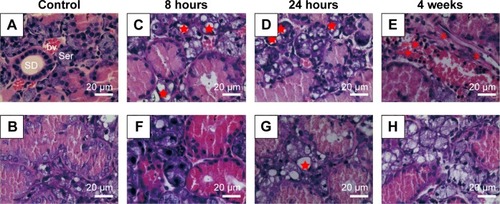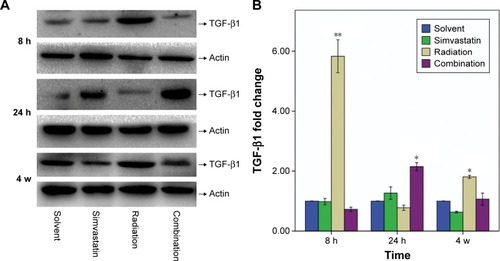Figures & data
Figure 1 Salivary flow and AMS activity exam.
Abbreviations: IR, irradiation; AMS, amylase; h, hours; w, weeks.

Figure 2 Serum cholesterol and MDA content in SMGs of the four groups at different time intervals.
Abbreviations: MDA, malondialdehyde; SMG, submandibular gland; d, days; h, hours; w, weeks.

Figure 3 Histopathological changes in SMGs after irradiation (H&E staining).
Abbreviations: SMG, submandibular gland; H&E, hematoxylin and eosin; IR, irradiation; SD, striated duct; bv, blood vessel; Ser, seromucous acinus.

Figure 4 Masson’s trichrome staining; collagen stained blue.
Abbreviation: IR, irradiation.

Figure 5 Protein content of TGF-β1 (25 Kd) in SMGs of mice at 8 hours, 24 hours, and 4 weeks after IR was assessed by Western blot analysis.
Abbreviations: TGF-β1, transforming growth factor β1; SMG, submandibular gland; IR, irradiation; SD, standard deviation; h, hours; w, weeks.

